At the De La Salle-College of Saint Benilde, an exhibit of ternos created by mid-century designers Ben Farrales, Pitoy Moreno, Ramón Valera, and Auro Alonzo stand tall as a symbol of modern tradition
Perched high within the hallowed halls of the School of Design and Arts building at De La Salle-College of Saint Benilde, a striking exhibit breathes life into historical artifacts. These garments have endured the ravages of war and the relentless march of time far longer than any visitor who steps into this space. These items have witnessed the trials of torn seams and the wear and tear of ages, only to be lovingly restored to their former glory. When their names echo through the gallery, they invite those present to look not at their past, but toward the future. They are none other than the ternos.
RELATED: Ternocon 3 Takes Center Stage at Rakuten Fashion Week Tokyo
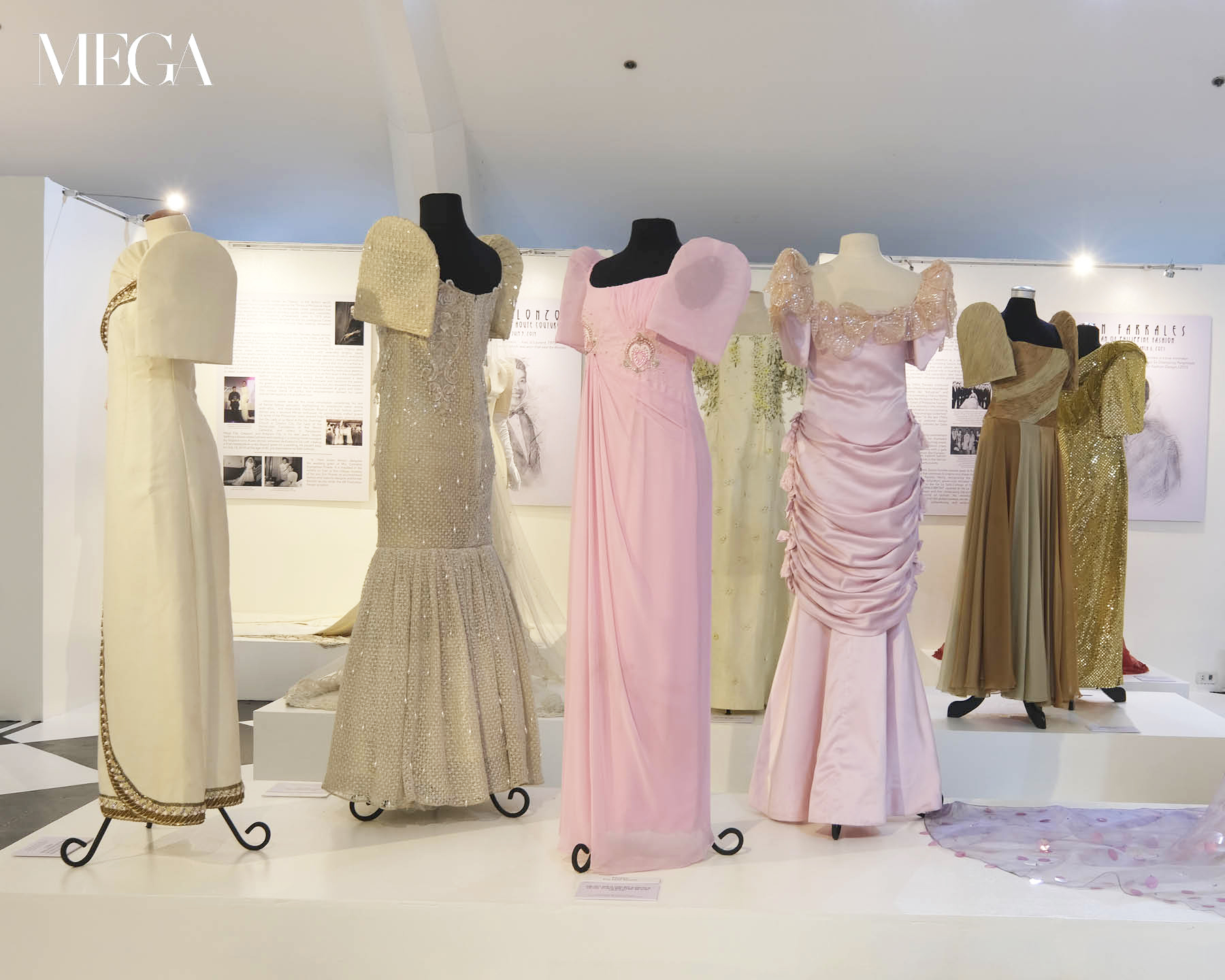
“Fashion, Power, Modernity: The Ternos of the Benilde Collection” is a transcendent display of Filipino identity. The guardian of this treasury, Architect Gerry Torres, safeguards a collection that holds history within its delicate folds while simultaneously evolving the future. Among the awe-inspiring ternos that grace the exhibition, designers like Ben Farrales, Pitoy Moreno, Ramón Valera, and Auro Alonzo stand for the progressive spirit that defined the Filipina dress. Initially an emblem of tradition, these garments have been transformed into contemporary works of art, reminiscent of a past that once seemed devoid of modernity. In a profound manner, they emerge as symbols of liberation and innovation, proving that, despite the constraints of their time, these designers possessed the creative power to shape the future.
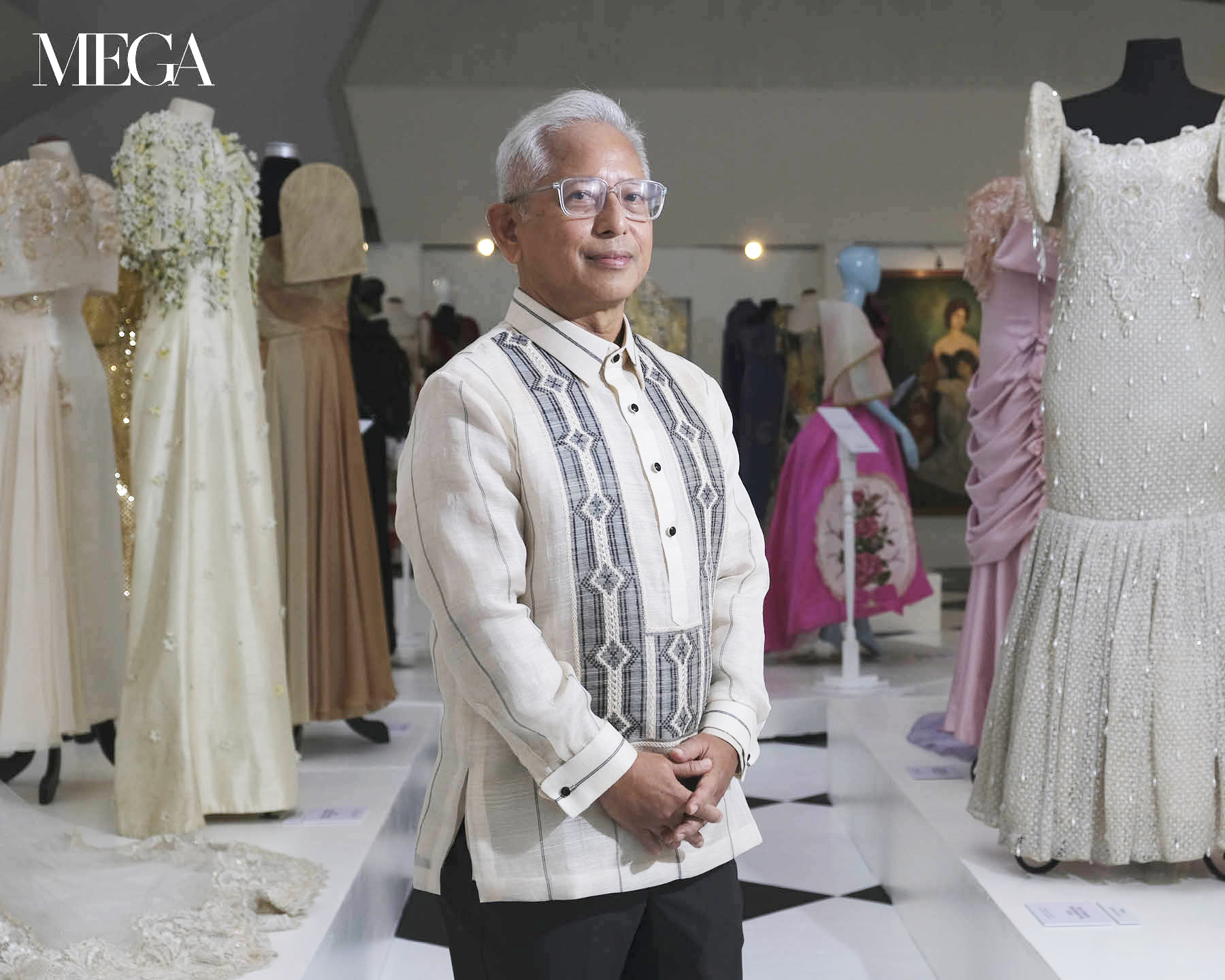
A gift of history
It’s an opening act that is steeped in reverence and history, beginning with the Farrales family’s heartfelt decision. Their trust in Benilde as the guardian of their cherished collection carries profound significance. The passing of Ben Farrales in 2021 added a layer of solemnity to this gesture, turning it into the transference of heritage. The initial 200 pieces marked the foundation of this unfolding journey, each bearing the weight of generations’ worth of history and the artistry of Filipino designers. The acceptance of this gift bestowed upon Benilde the responsibility of safeguarding a legacy.
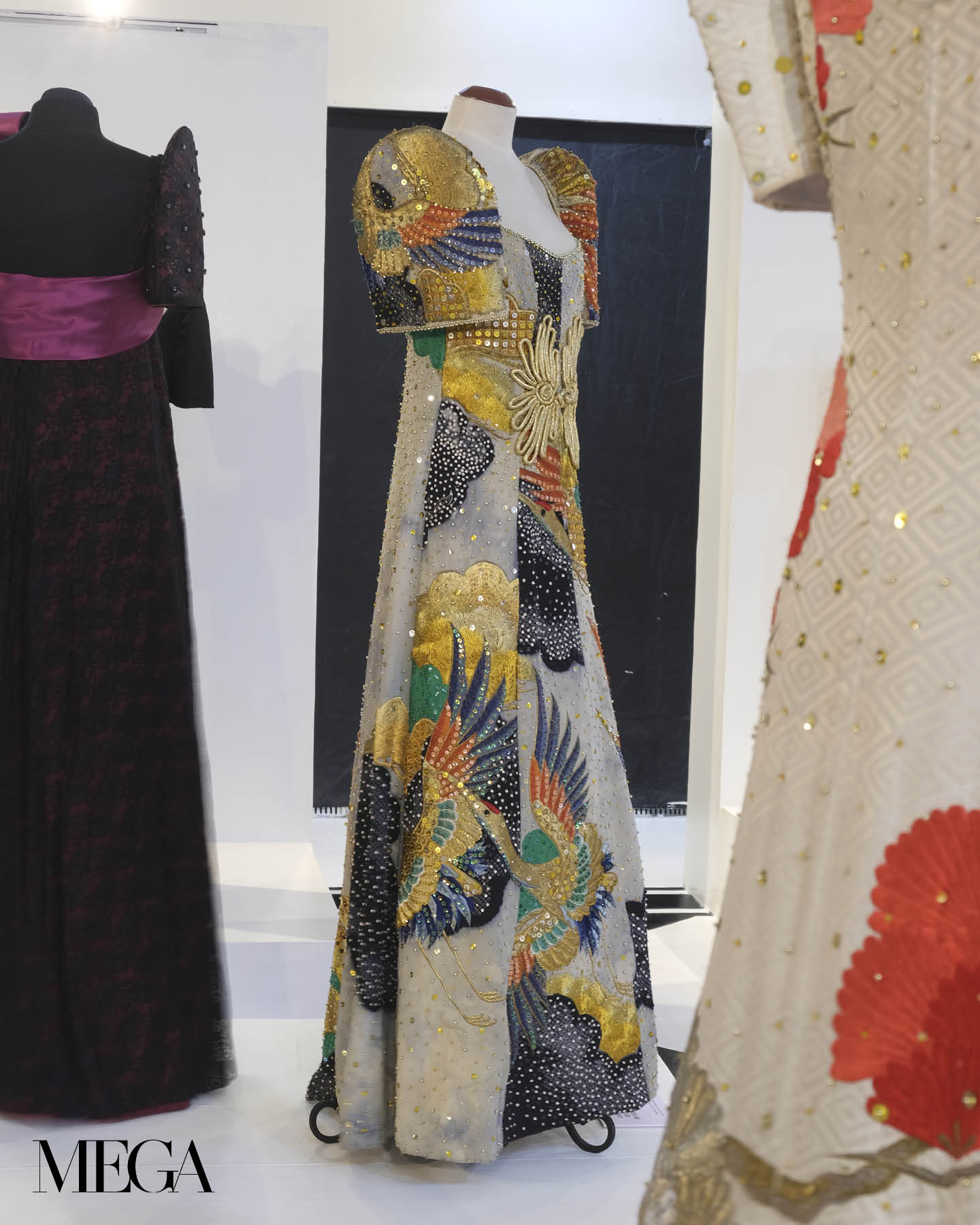
Tradition revealed with a modern twist
Valera, Farrales, Alonzo, and Moreno, four names etched in Philippine fashion, breathed life into the ternos. Between them, they contributed a staggering 80 to 90 years of sartorial magic. Valera’s journey began even before the ravages of the war, a testament to his enduring influence. “I thought, thematically, the terno is something that has been transformed. It’s a national icon,” Ar. Torres says. The ternos they meticulously fashioned, now gracing the exhibition, surpass just apparel as they stand as artistry that represents the essence of Philippine fashion. “There’s just an endless array of possibilities that these designers have created.”
While ternos inherently exude tradition and often retain their traditional appearance, these mid-century designers demonstrated their prowess in infusing modernity through the painstaking craftsmanship. They took the conventional and turned it into the contemporary, one that dripped with golden leaves, sparkled with an array of approximately 1,000 dazzling gems, and bloomed with intricate floral embroidery.
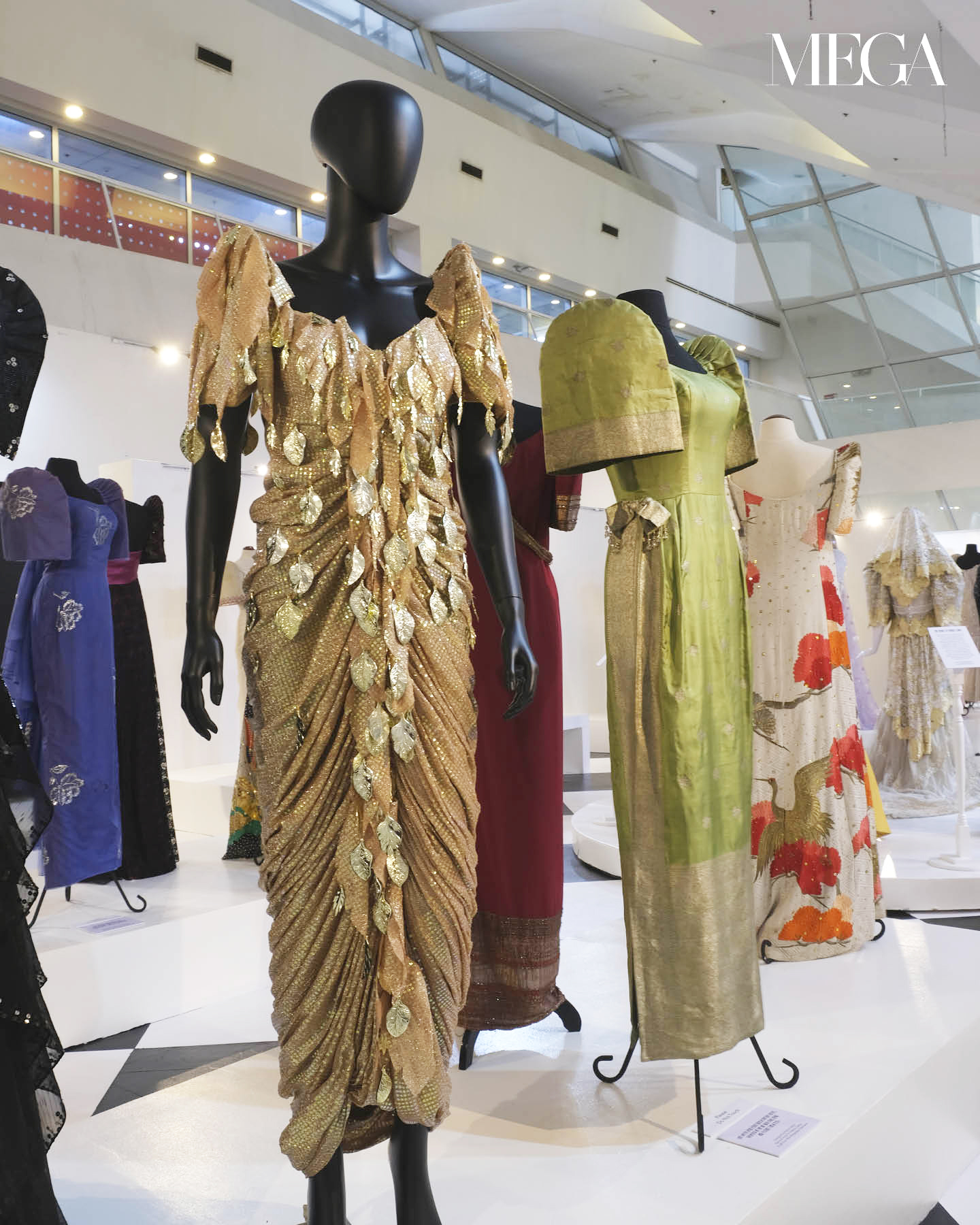
Lace and jewel tones were a source of inspiration. Ribbons and belts were plentiful. Craftsmanship and creativity were evident in the butterfly sleeves. Some designs had a disco-inspired flair, while others explored elements of impressionism. The fabrics flowed with silk or satin or sateen, they were ruffled, gathered, or ruched, and they played with colors and concepts, all while preserving the quintessential terno silhouette.
In the skilled hands of these designers, the terno transcended its conventional form, no longer merely an article of clothing, but a chronicle of culture. Initially a modest garment characterized by its distinctive butterfly sleeves, it unfolds within the confines of this exhibition as a profound symbol of modernity with tradition. “It’s amazing how they are able to transform them in so many ways, endless possibilities of the terno that they’ve done, and you will see it inside in terms of the cut, silhouette, fabric, and embellishment.”
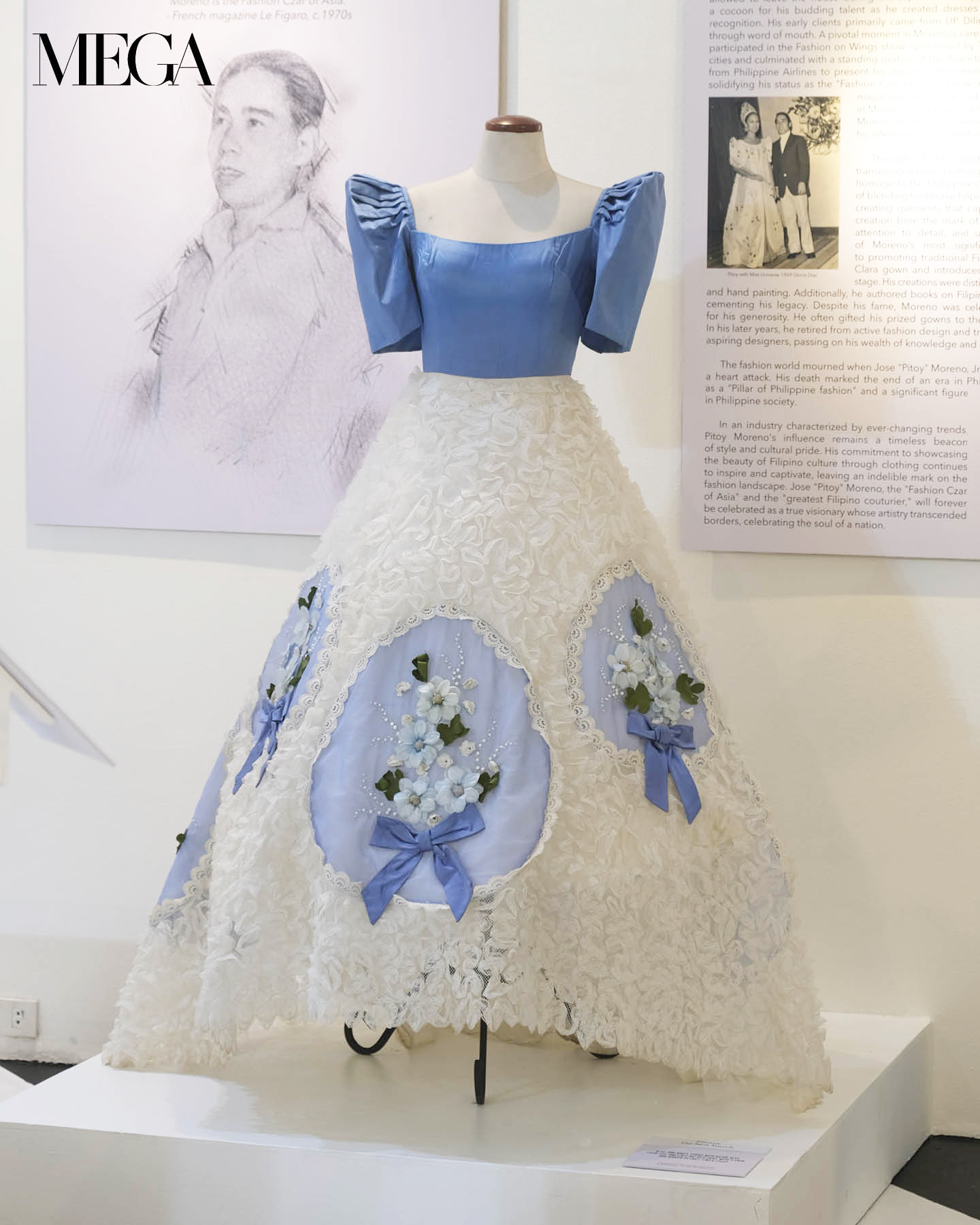
“Of course some of them have age in terms of the textile,” Ar. Torres admits, “But in terms of the design? Timeless.” Each piece on display resonates with the potential for evolution and rebirth. The ornate designs and meticulous craftsmanship, rendered only by hands sans machine, paint a vivid portrait of a garment transformed. “You can also see the designers’ mastery, their mastery of draping, of construction, of beading, which is all by hand. Nothing here was made by a machine—it was all by hand.”
As one gazes upon these masterpieces, it’s as if they bear witness to the ever-evolving personality of Filipino artistry, evidence to the potential concealed within this attire. Ar. Torres also acknowledges the manual labor works of those who helped these designers. “I think it is also a credit to our Filipino workers, embroiderers, the seamstresses, the beaders who have devoted very many hours just to create these masterpieces.”
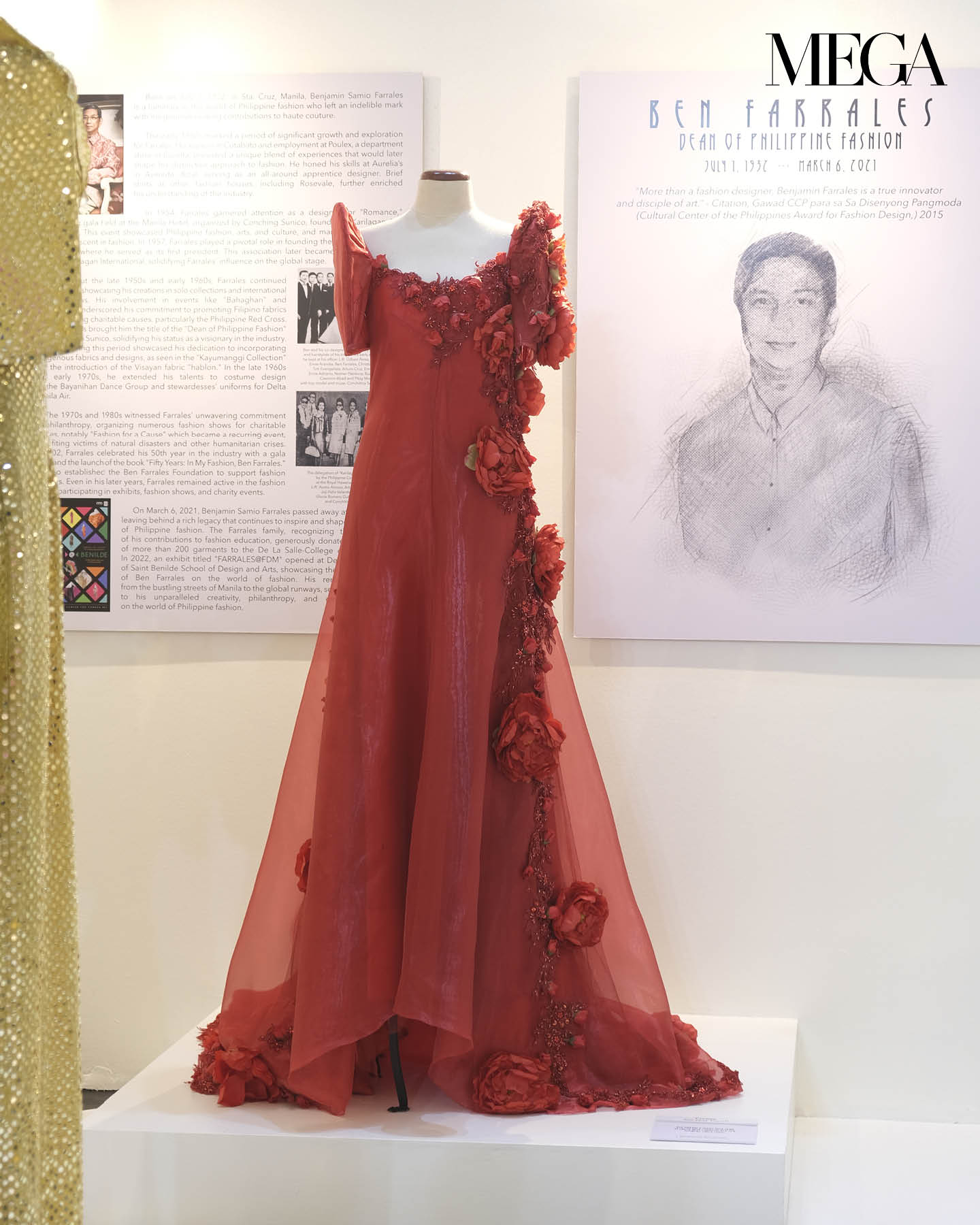
The three facets of significance
“Fashion, Power, and Modernity” represent three distinct facets intertwined within the narrative of the terno’s significance. In this trio of themes, we find a multi-layered tale.
Fashion, the first element, delves into the artistry of those who shaped the terno into a cultural symbol, an emblem of creativity and identity. Power, the second facet, carries a deeper significance, alluding to the terno’s role in liberating Filipino women from the constraints of traditional attire, paving the way for a more modern, liberated era. Modernity, the final piece of the puzzle, signifies the Philippines’ transition into a dynamic, technologically driven society post-war. The terno encapsulates this journey towards progress and innovation. It is proof of the resilience and adaptability of the Filipino spirit. Together, these themes paint a vivid portrait of the terno’s enduring elegance and the evolution of Philippine culture.
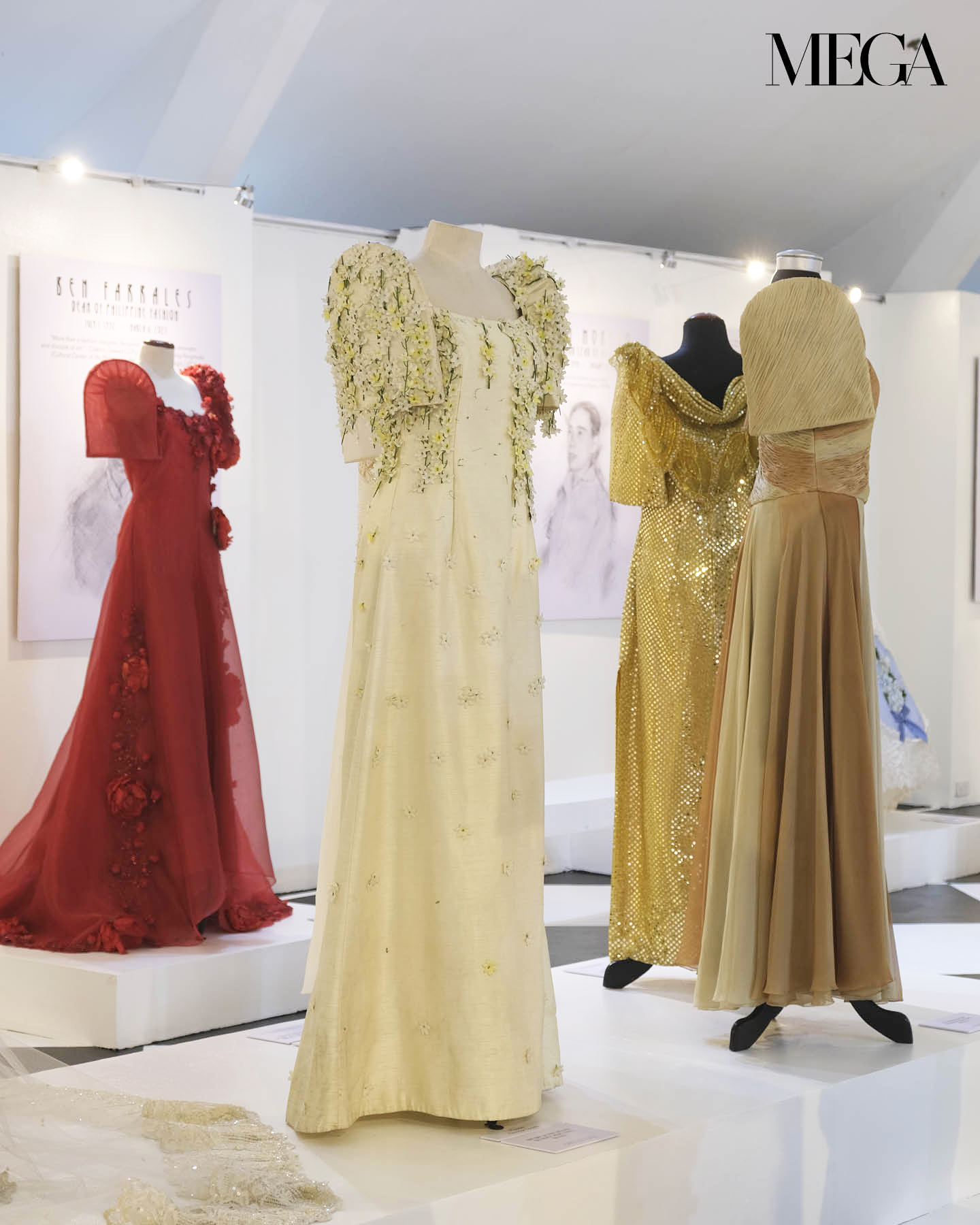
A timeless masterpiece of evolving design
In the eyes of Architect Gerry Torres, the terno remains a timeless masterpiece, a symbol of grace and ingenuity. “The terno is such an elegant and perfect garment in terms of its form. The way that it’s evolved has come up with so many possibilities.” He envisions the dress inspiring future Filipino designers to explore new horizons while preserving the elegance that defines it. “I hope that the future Filipino designers will continue to explore what and how they can make the terno even more beautiful or innovative or contemporary even.” The terno is a living tradition, an art form, and a promise of enduring and elegant beauty.
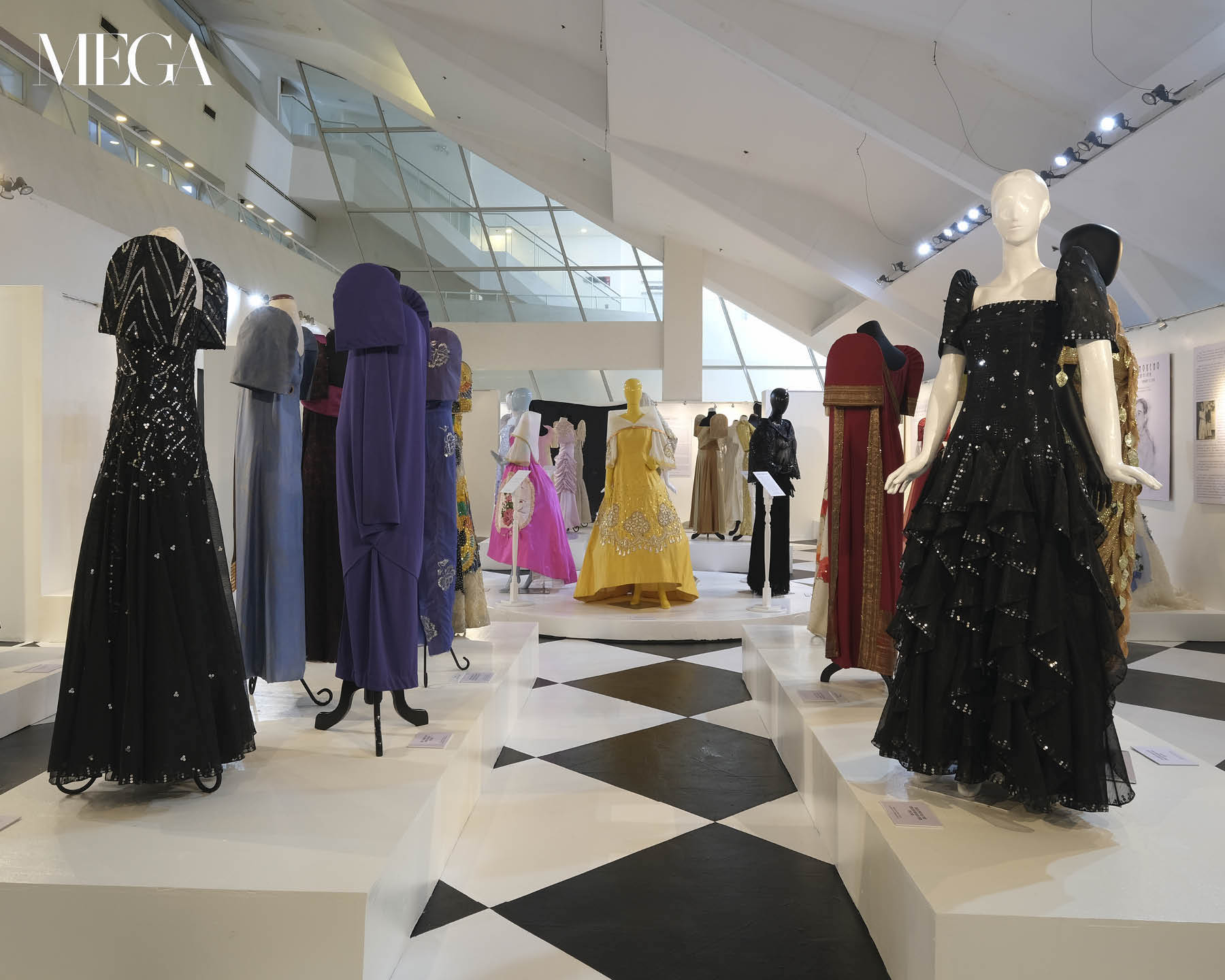
The “Fashion, Power, Modernity: The Ternos of the Benilde Collection” exhibit curated by Architect Gerry Torres is a celebration of the enduring evolution of the terno. It’s a testament to the Filipino designers who transformed a simple dress into works of art and a symbol of national identity. This collection is not just about preserving the past, but also inspiring the future of Filipino fashion.
“Fashion, Power, Modernity: The Ternos of the Benilde Collection” is open to the public at the 12F Gallery of De La Salle-College of Saint Benilde Design + Arts Campus from Oct. 13 to Dec. 15, 2023.
Photography ED SIMON







